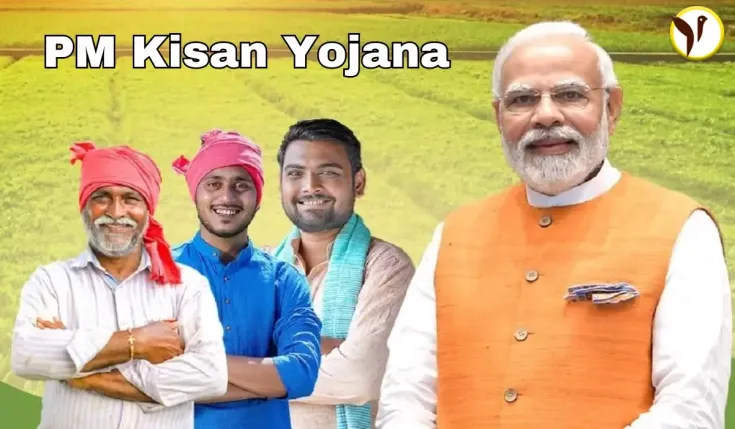In a significant announcement for the agricultural community, Prime Minister Narendra Modi has approved the release of the 17th installment of the PM Kisan Samman Nidhi Yojana. Farmers across India are set to receive ₹2000 directly into their bank accounts as part of this new installment, aimed at providing much-needed financial assistance.
Key Details
- Installment Amount: ₹2000 per farmer
- Total Beneficiaries: Approximately 9.3 crore farmers
- Total Funds to be Disbursed: Around ₹20,000 crore
- Expected Disbursement Date: First week of July
The PM Kisan Samman Nidhi Yojana, popularly known as PM Kisan, is a flagship government scheme launched in February 2019 with the objective of augmenting the income of small and marginal farmers. Under this scheme, eligible farmers receive ₹6000 annually, distributed in three equal installments of ₹2000 each. This financial assistance is designed to help farmers meet their agricultural and domestic needs, thereby ensuring a steady income stream to sustain their livelihoods.
PM MODI ने आज हस्ताक्षर किए, देशभर के किसानों के लिए सबसे बड़ी खबर |PM Kisan Yojana@narendramodi @PMOIndia pic.twitter.com/miap5OcYgZ
— apna Bharat24 (@ABharat24) June 11, 2024
Impact of the PM Kisan Yojana
Since its inception, the PM Kisan Yojana has had a profound impact on the agricultural sector, reaching over 9 crore beneficiaries nationwide. The scheme has been instrumental in:
- Providing Financial Stability: Ensuring farmers have a reliable source of income.
- Enhancing Agricultural Productivity: Enabling farmers to invest in better seeds, fertilizers, and farming equipment.
- Reducing Debt Burden: Helping farmers manage their debts and reduce dependency on informal sources of credit.
PM Kisan Samman Nidhi Yojana: शपथ लेते ही पीएम मोदी ने दिया किसानों को तोहफा, खाते में आए 2-2 हजार@narendramodi #pmkisansammannidhi #kisansamman #yojana #kisan #farmer
— Bansal News (@BansalNewsMPCG) June 10, 2024
पूरी खबर पढ़ें : https://t.co/mcEWBZHffq pic.twitter.com/iYi6hSQ9Lh
Registration and Application Process
Farmers who have not yet registered for the PM Kisan scheme can do so through both online and offline channels. The government has streamlined the registration process to ensure that all eligible farmers can easily access the benefits.
Online Registration
Step 1: Go to PM Kisan's official website.
Step 2: Click on "New Registration" and fill in the necessary details such as name, address, Aadhaar number, bank account details, and mobile number.
Step 3: Complete the form, create a password, and submit the application.
Step 4: The submitted information is verified by the respective state governments. Once verified, the funds are directly transferred to the beneficiary's bank account.
Offline Registration
Step 1: Farmers can also register by visiting their nearest agriculture office.
Step 2: Fill out the application form and submit it along with required documents such as Aadhaar card, PAN card, bank account passbook, and a passport-size photograph.
Step 3: Agricultural officers assist farmers in completing the registration process and ensure that their details are correctly entered into the system.
Eligibility Criteria
To be eligible for the PM Kisan Yojana, farmers must meet the following criteria:
- Land Ownership: The farmer must own cultivable land.
- Land Records: Land records must be updated in the state government database.
- Exclusions: Institutional landholders, farmer families holding constitutional posts, and those paying income tax are excluded from the scheme.
Government's Commitment
The timely release of funds under the PM Kisan Yojana reflects the government's ongoing commitment to supporting the agricultural sector and ensuring the financial stability of farmers. This scheme is part of a broader strategy to enhance rural prosperity and boost the agricultural economy.
Challenges and Future Prospects
Despite its success, the PM Kisan Yojana faces challenges such as:
- Updating Land Records: Ensuring all land records are up-to-date to prevent delays in disbursal.
- Inclusion of Tenant Farmers: Expanding the scheme to include tenant farmers who do not own land but cultivate it.
- Awareness Campaigns: Increasing awareness among farmers about the benefits and registration process to ensure maximum coverage.
The government is continuously working to address these challenges and improve the efficiency of the scheme. Future enhancements may include the integration of digital technologies for better monitoring and faster disbursement of funds.







